BunforD Flax Factory
Bunford Flax Factory
Producing linen for the war effort
The soil in the Yeovil area, known as 'Yeovil Sands', is especially suited to growing flax, hemp and jute and, as a consequence, the cultivation of flax and hemp was once widespread and common to a considerable area in and around Yeovil, at least from the fourteenth century. In 1692 it was recorded that "great quantities of flax were sown in this year about Yeovil and a considerable quantity of good flax hath been sown last year for making cloth, ticking and sewing thread."
In 1795 it was recorded that ".... in the rich fertile country extending from Wincanton, through Yeovil to Crewkerne, flax and hemp are cultivated in great abundance." and in 1791 Collinson wrote about Yeovil "The market.... is very large for corn, cattle and pigs; for bacon, cheese, butter, flax and hemp" and in 1856, Daniel Vickery paraphrased "The market day is Friday, every alternate Friday being what is called 'The Great Market'. Corn, cattle, butter, cheese, hemp and flax, are also sold in great quantities."
In 1871 over 2,300 acres of flax was grown in the southwest as a whole, declining to 452 acres in 1891. Ever-increasing amounts of foreign imports, especially from Russia, supplied the linen industry to make up for the decline in locally-grown flax.
The Journal of the Textile Institute reported in 1916 "The Development Fund Act of 1909 mentioned the growth and preparation of flax as one of those rural industries which the Development Commission were empowered to encourage. Accordingly, after preliminary enquiry, the Commission invited the University of Leeds to take charge of a centre of investigation at Selby (Yorkshire), and also promoted the formation of the British Flax and Hemp Growers' Society, which controls another experimental mill at Yeovil, in Somersetshire, and with which the Leeds University works in collaboration."
During the Great War there was an increased need for certain products, including flax, which was used in the aeroplane construction industry and so more land workers were needed. The Women’s Land Army was created and the superb series of photographs shown below capture the atmosphere of working on the land, harvesting and processing flax. Hundreds of women volunteered and came to Yeovil to work in the flax fields, living in tented camps around Yeovil. They were given free food and paid a shilling a day. At Barwick House, for instance, a camp of 600 land girls was established.
According to a 1918 article in Flight magazine "The terms that are being offered to farmers in suitable districts seem to be such as ought to induce them to carry out the Board's desires without difficulty. The Government is to pay £8 10s per ton for the total crop of seed and straw, and as a fair yield is from two to three tons per acre, and the seed for sowing is to be supplied free, there ought to be a very fair return to the farmer. Moreover, the latter is offered an additional inducement in the shape of a guaranteed minimum payment of £14 per acre for all land suitably managed, irrespective of the return of flax. It has also been arranged that in case labour trouble should be a deterrent, the Department will weed and harvest the flax at a level cost to the grower of £4 5s per acre."
When imported flax, especially from Russia with the closing of the Russian ports, became scarce the Bunford Flax Factory was constructed by the Government in 1916 in order to manufacture linen fabric to cover the wings and fuselages of aircraft at the Westlands Works which had been established by Ernest W Petter at the beginning of the First World War. It was both a mechanised processing plant for the raw flax and for the manufacture of linen cloth for the aircraft. The field to the south had cleaning pits along the southern boundary.
The organisation of the flax works was carried out under the Flax Production Branch of the Ministry of Agriculture and Fisheries, in consultation with a Local Advisory Committee representing local flax-growing and flax-spinning interests.
In 1920 the Flax Production Branch of the Ministry disposed of the "Yeovil centre (Somerset and Dorset) flax factories" to investment bankers A Mitchelson & Co Ltd. The sale included the seven Government flax factories at Bunford, Preston Plucknett, South Petherton, Lopen, Taunton, Dorchester and Bridport. Mitchelson's sold the Bunford works on to the newly-formed Wessex Flax Factories Ltd whose Managing Director was Jesse Crumpler, a farmer of North Coker.
In 1920 it was noted that the annual crop capacity of the factory was 2,000 tons.
In September of 1924 Wessex Flax Factories Ltd went into liquidation leaving some 400 flax growers in Somerset and Dorset unpaid for their flax grown under a contract of 1922. The Bunford Flax Factory was then let temporarily by the Receivers to the Linen Industry Research Association but very shortly thereafter the premises were acquired by Flax Industry Development Society Ltd whose Managing Director was - yes, you guessed it - Jesse Crumpler, a farmer of North Coker.
During the later 1920s the Bunford Flax Factory was operated by the Flax Industry Development Society Ltd who advertised annually "to receive offers of land for the flax crop". The 1927 advertisement shown in the Gallery below is typical of the period. The Flax Industry Development Society Ltd was formed under the Industrial & Provident Societies Act but was dissolved in 1934 (no surprises there with Mr Crumpler in command).
A report of the
failed sale of
the property in
1934, shown
below, described
it as "The
freehold factory
at Bunford,
consisting of a
single storey
brick building,
containing a
floor space of
40,000 square
feet, with
vacant land, the
whole being
about 25½
The site was eventually sold to Aplin and Barrett and the Western Counties Creameries Ltd. during the period 1934-37 and became known as the Watercombe Creamery. Today, the site of the former Bunford Flax Factory is now part of Yeovil Trade Park and the access track to the former flax works is now Watercombe Park.
See also - The Flax Industry and the Preston Plucknett Flax Works.
Aerial Photographs
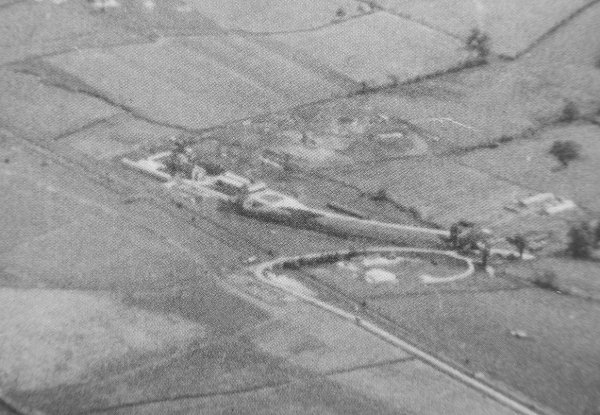
From my
collection
The Bunford Flax Factory seen from the northwest in this aerial photograph of 1941. The Yeovil to Durston railway line runs from top left to bottom right In the bottom (the bridge over the railway, at the centre of the photograph, remains today). The bottom left quadrant is part of Westland's airfield and, in what appears to be a circular road, is Yeovil Barrage Balloon Site No 2, "Watercombe Road Barford" (ie Bunford) adjacent to the Bunford Flax Factory.
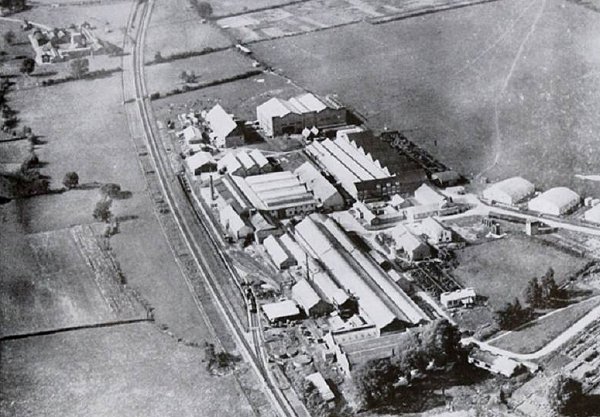
An aerial photograph of the Westland factory with the Yeovil to Durston railway line running from centre bottom to top left. In the top left corner is the Bunford Flax Factory, enlarged below.
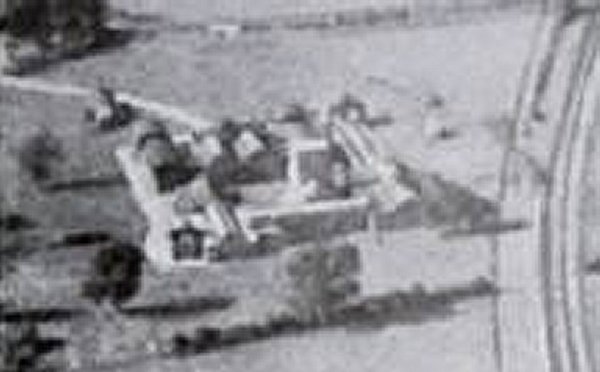
A somewhat hazy enlargement of the Bunford Flax Factory from the previous photograph.
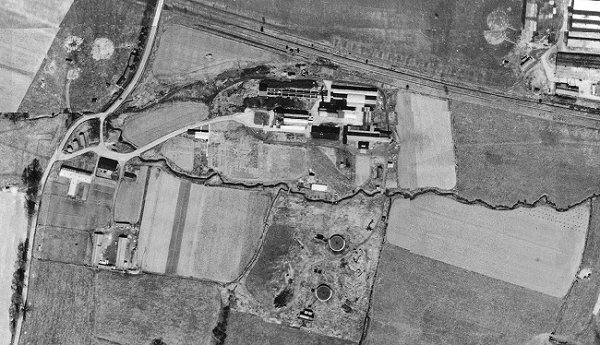
The 1946 aerial photograph showing the Bunford Flax Factory at centre top. Watercombe Lane runs up the left side of the photograph and lane and the bridge over the railway at the very top edge of the photograph remain today.
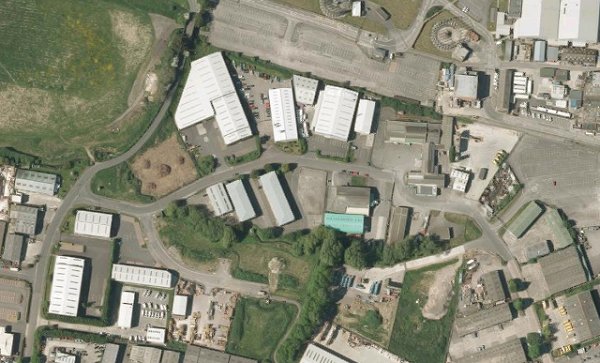
In this modern aerial photograph the railway is long gone but Watercombe Lane remains. The site of the former Bunford Flax Factory is now part of Yeovil Trade Park and the access track to the former flax works is now Watercombe Park.
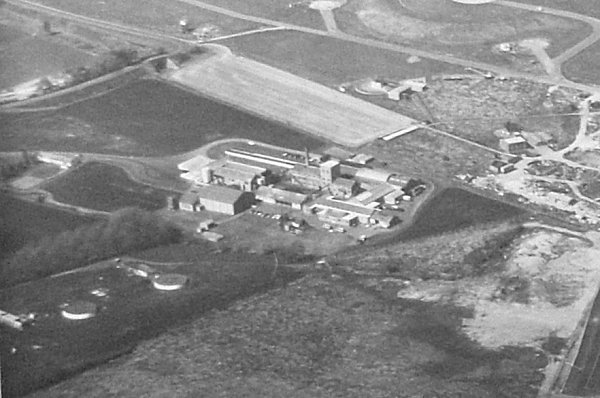
The Bunford Flax Factory photographed in the 1960s after the railway line had been removed. The bridge and road seen at top left survive today.
Gallery
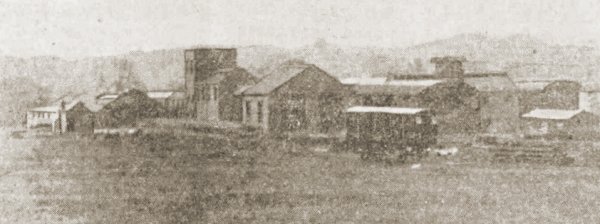
Courtesy of
Roger McElliott
A general view of the Bunford flax factory from a newspaper in the 1920s with a railway wagon in the Bunford siding that was connected to the GWR Yeovil to Durston line.
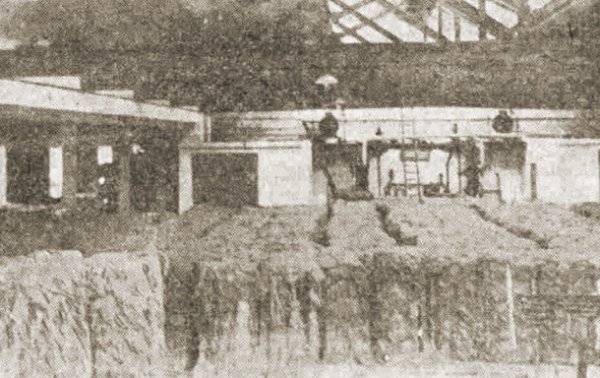
Courtesy of
Roger McElliott
Another 1920's newspaper photograph showing 100 tons of scutch flax at the Bunford factory, awaiting shipment by rail to the spinning mills.
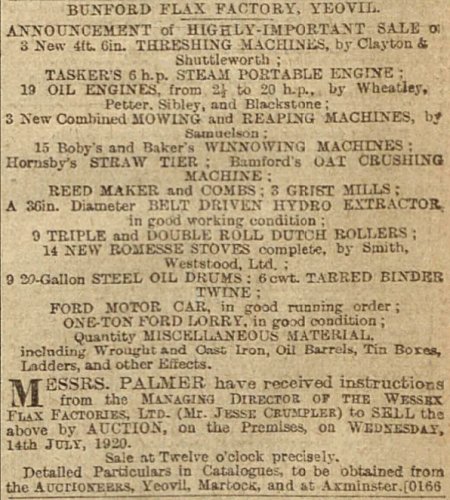
This notice of sale from the 25 June 1920 edition of the Western Gazette gives an excellent idea of the equipment required in a flax processing factory.
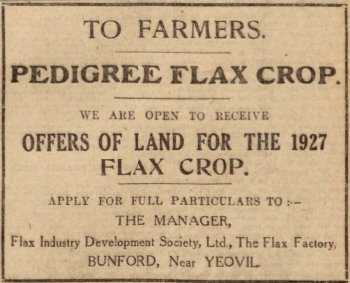
This advertisement from the 11 February 1927 edition of the Western Gazette is typical of the annual advertisements placed by the Flax Industry Development Society Ltd.
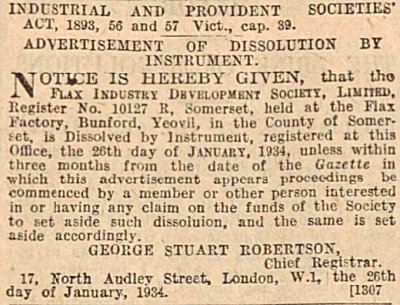
Notice of the dissolution of the Flax Industry Development Society Ltd from the 2 February 1934 edition of the Western Gazette.
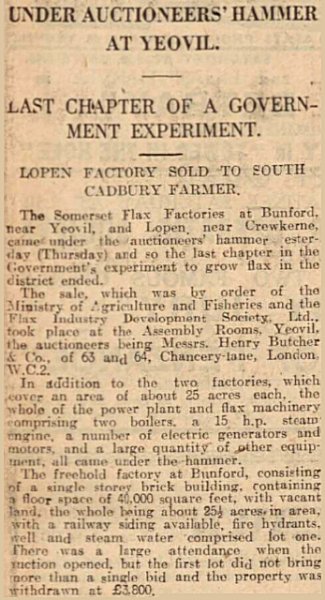
The report on the sale of the Bunford Flax Factory in the 2 February 1934 edition of the Western Gazette. At this sale only one bid of £3,800 was made and the property was withdrawn.
Yeovil Flax during the great war
The following five colourised photographs are courtesy of Alan Lawrie. His grandmother, Eunice Hillman (seated on the ground in the third photo below), lived in Weston Super Mare and was waiting to go to university in 1918. She was one of the 2,000 or more women taken from universities and colleges, and is almost certainly one of the 563 that were billeted in a tented camp at Barwick Park, since the photographs were taken by Witcomb & Son of Middle Street.

Photographed in 1918, the tented camp, believed to be at Barwick Park, accommodated 563 women flax workers.

Food preparation at the camp. It is likely that the two army personnel are soldiers from the Home Service Battalion of the Yorkshire Regiment who were billeted in the surrounding villages.

Young women flax workers pose in front of their tent. Unfortunately, the writing on the organisation badges the girls are wearing cannot be read.

Marching off to work in the flax fields.

A group of young women flax workers pose for a photograph by Witcomb & Son. Alan's grandmother, Eunice Hillman, is sitting on the ground at the front.
![]()
The following series of colourised photographs of young women working in the flax fields of Yeovil through to the processing of the flax, were taken by Horace Nicholls "on a farm in Yeovil" during the Great War of 1914-1918. These photographs are reproduced here under the terms of the Imperial War Museum's Non-Commercial License.
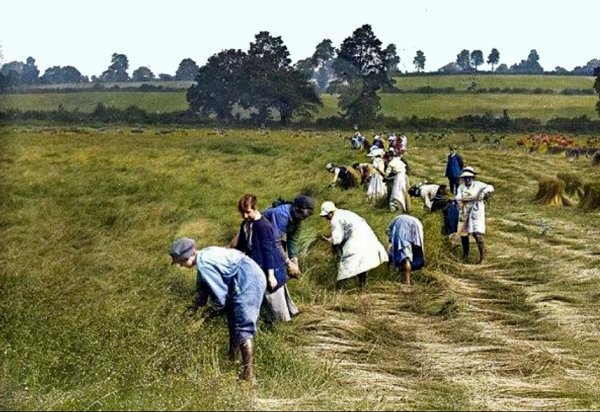
Pulling flax by hand.
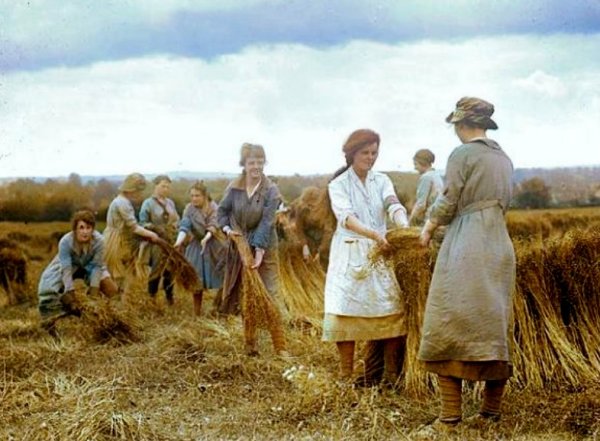
Pulling flax by hand.
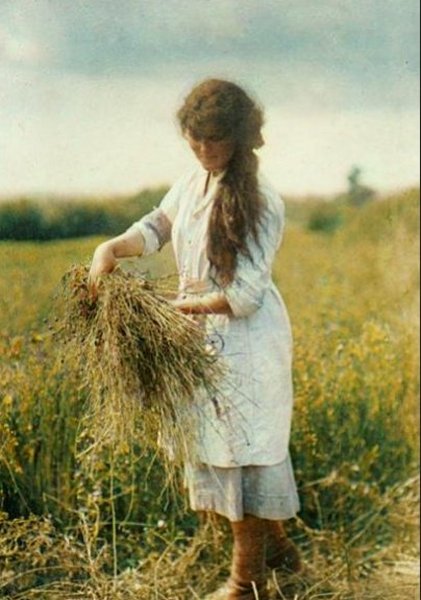
Pulling flax.

Pulling flax.
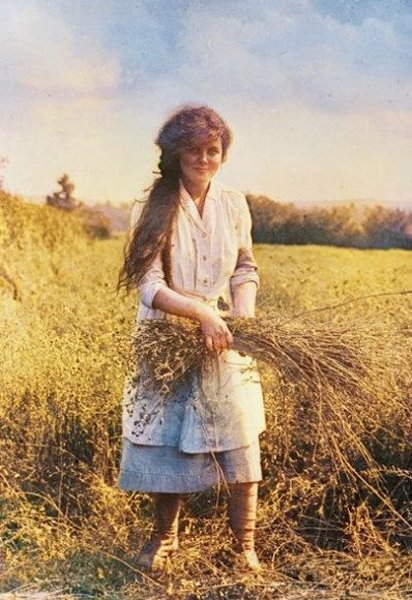
Flax pulled!
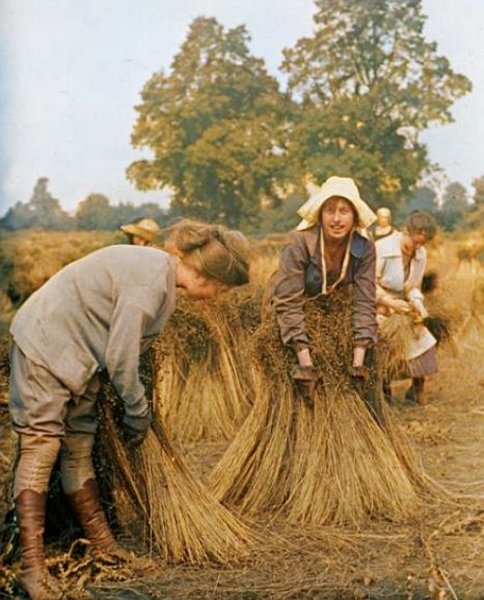
Collecting the pulled flax.
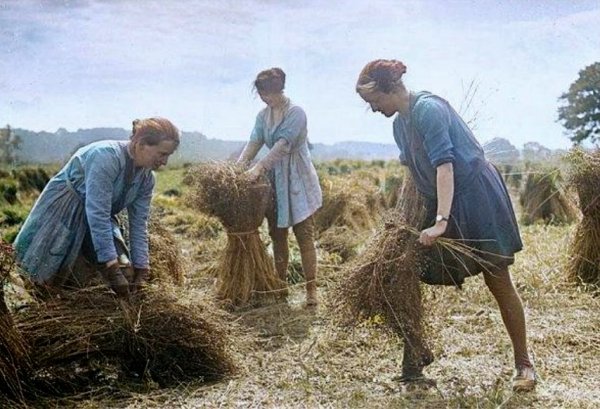
Collecting the pulled flax.
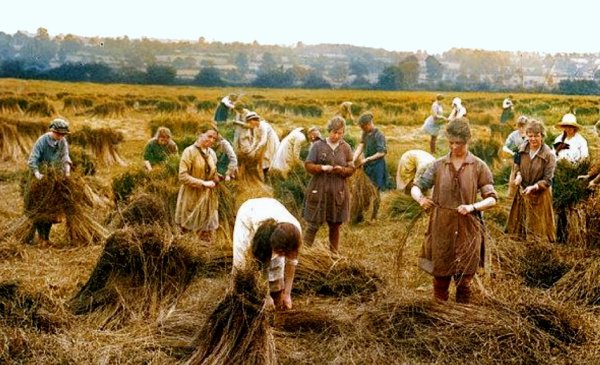
Collecting the pulled flax.
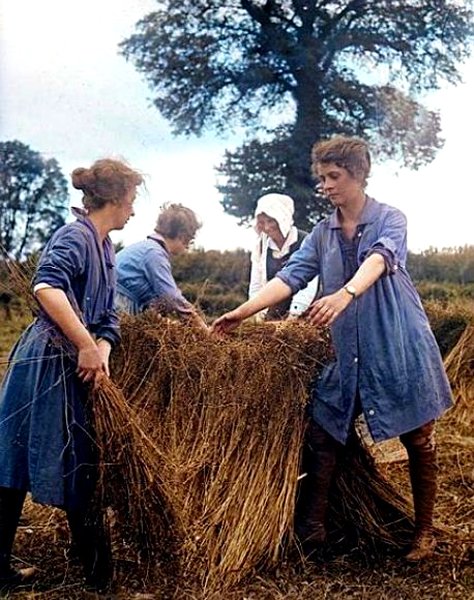
Collecting the pulled flax.
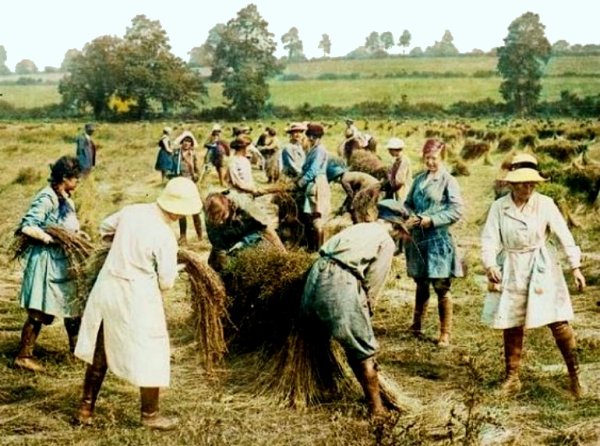
Collecting the pulled flax.
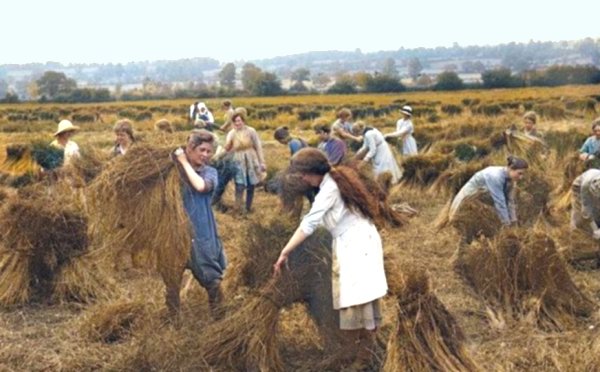
Collecting the pulled flax.
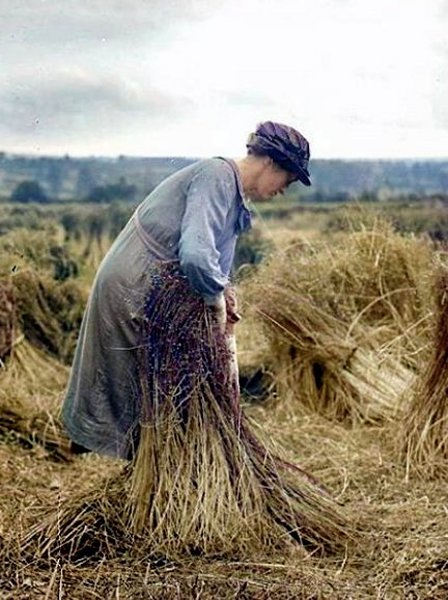
Skirting the flax.
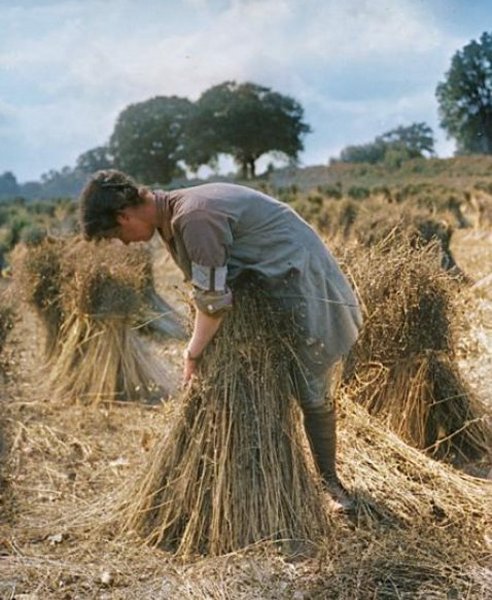
Skirting the flax.
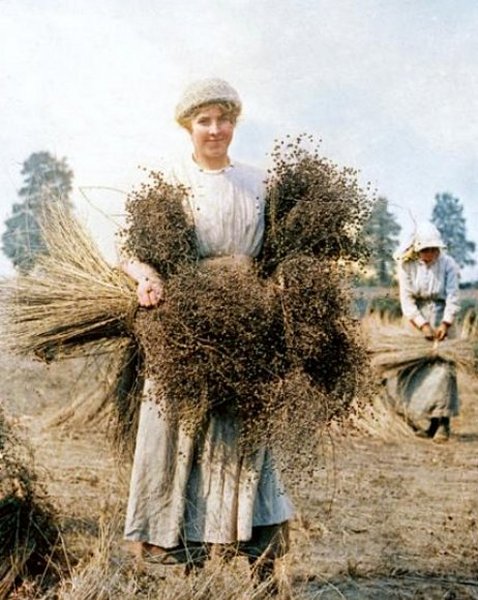
Carrying the skirted flax.
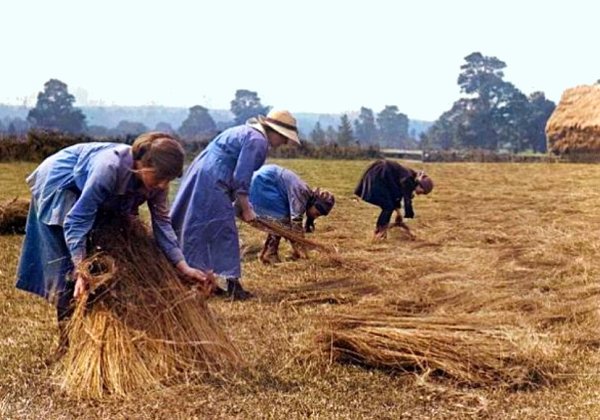
Laying out flax for dew ripening
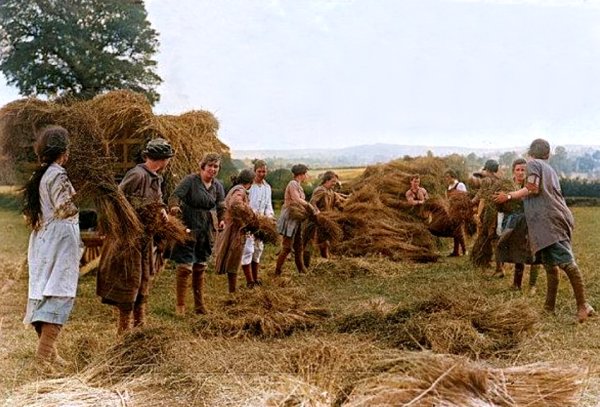
Tying and stacking the flax.
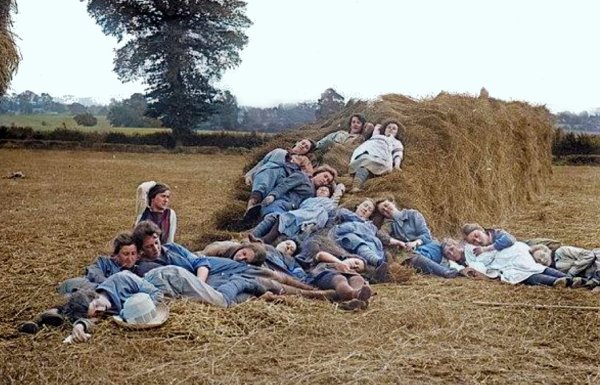
A well-deserved rest.
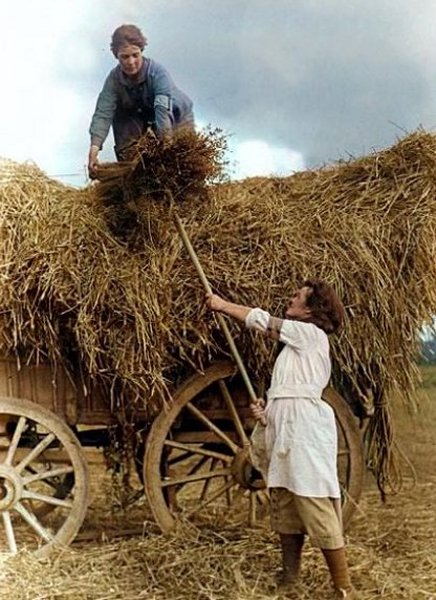
Loading the flax onto a wagon.
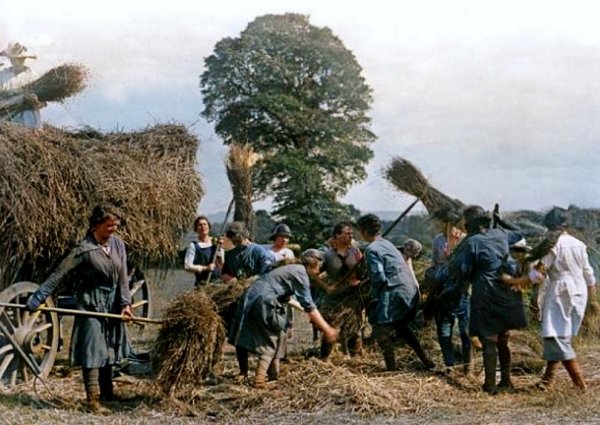
Loading the flax onto a wagon.
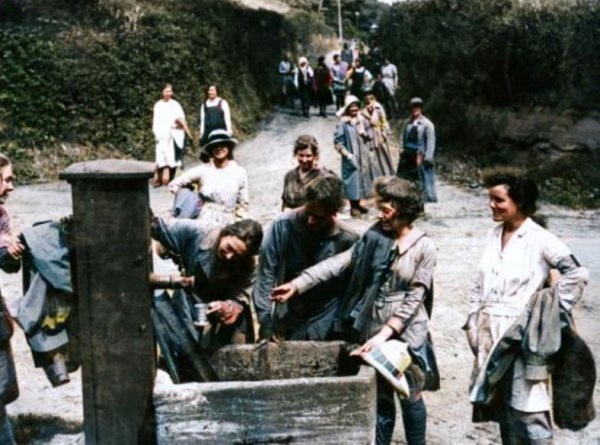
Girl workers getting a drink from a pump on their way home.
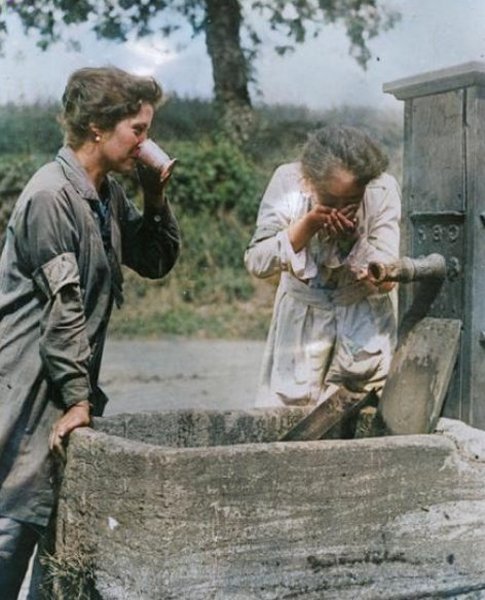
Girl workers getting a drink from a pump on their way home.
.... and then, back at the Flax Factory
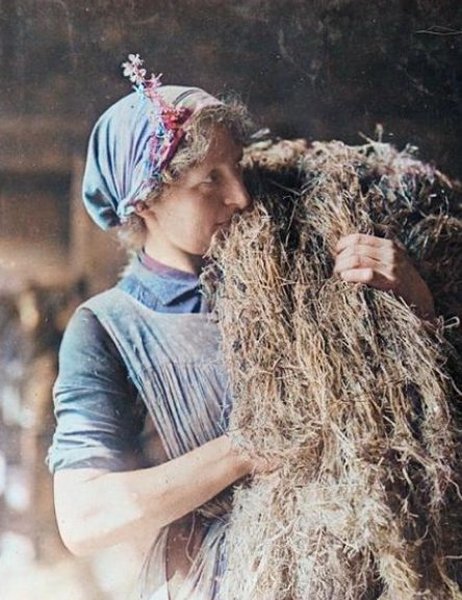
A girl holding a large bundle of flax.
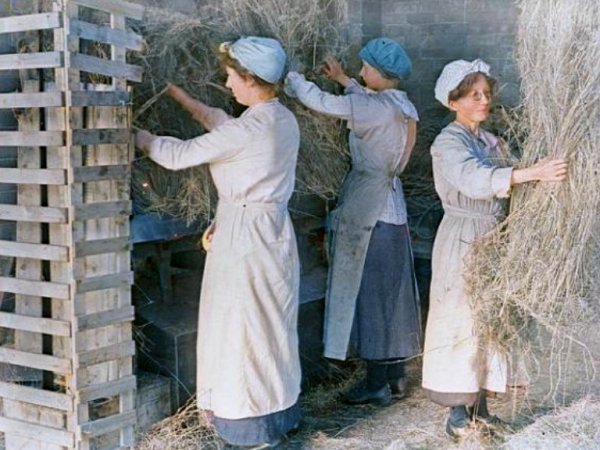
Evening up the lengths of flax for breaking.
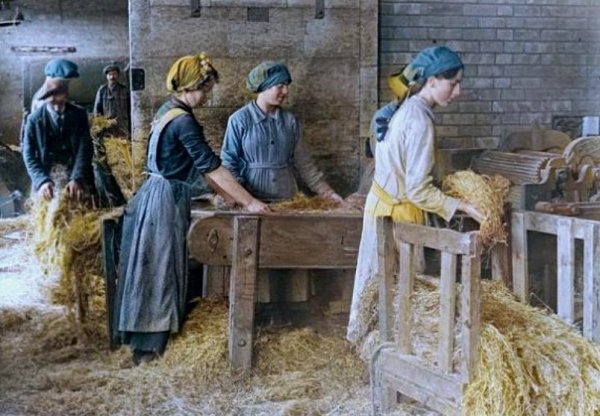
Breaking the flax.
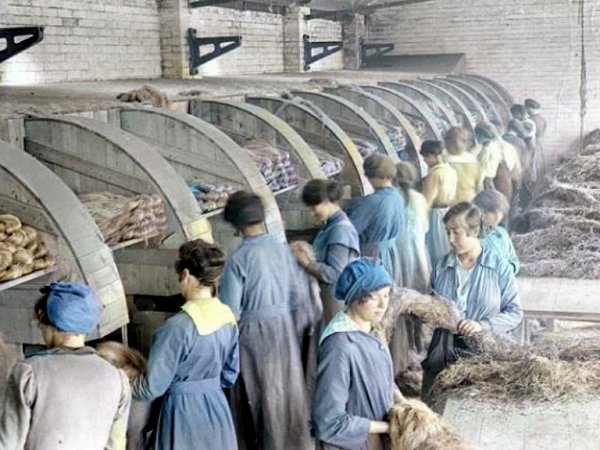
Scratching the flax.
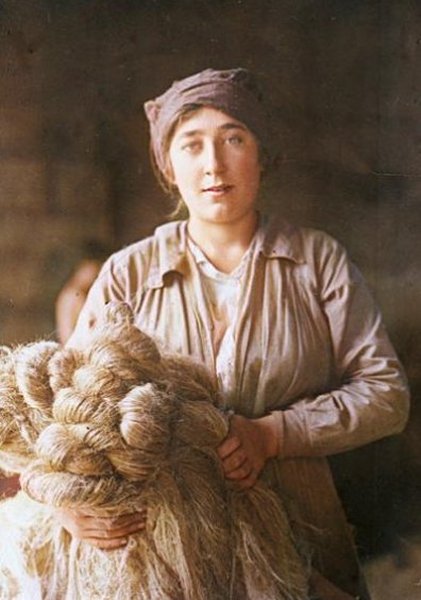
A girl with flax ready for spinning.

Weighing finished flax fibre.